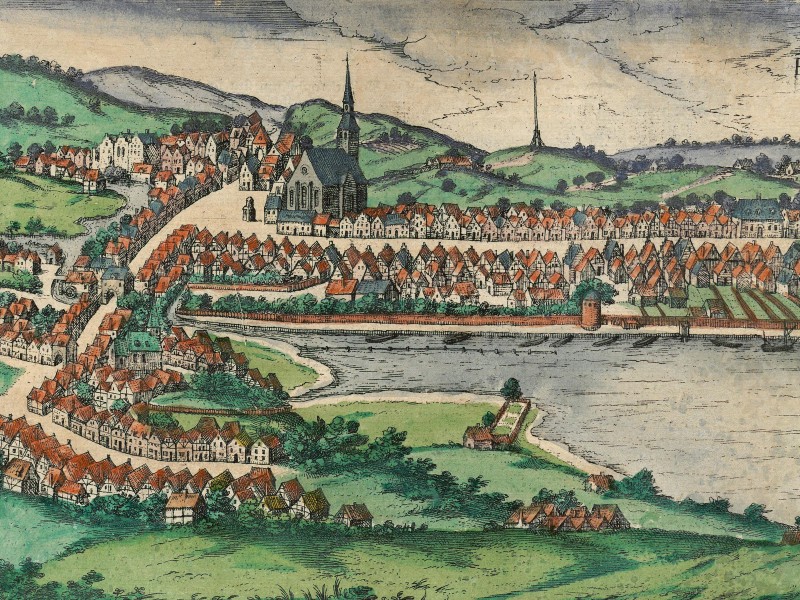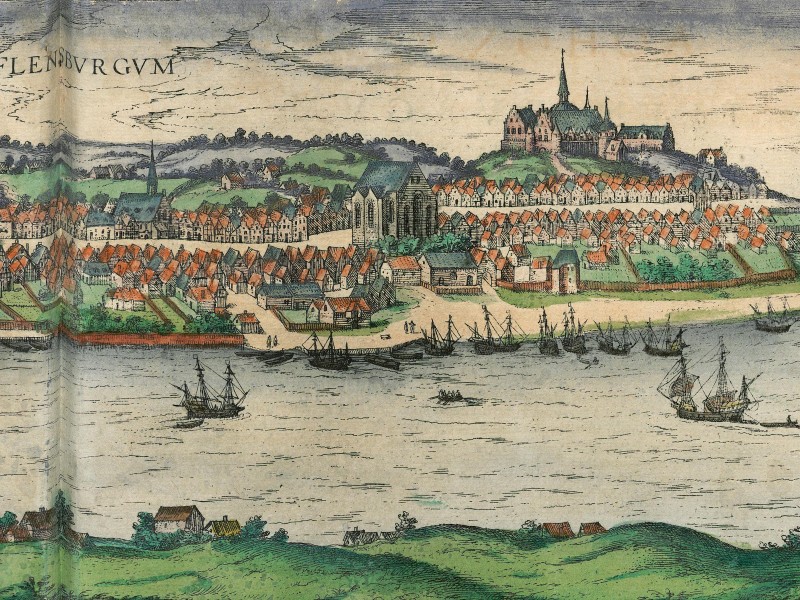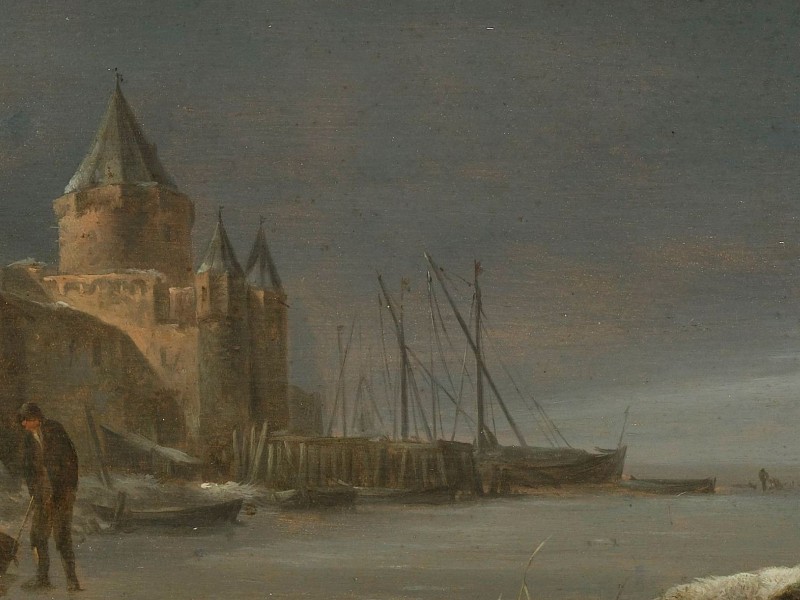
“When we were only a mile from the shore, the ice had become so thick that our boat could not pass through. Two of the boatmen got out and started hacking at the ice with iron picks.”1
From Kiel to Copenhagen
25 January – 2 February 1586
Frozen roads and frozen water — Samuel Kiechel had to traverse both on his way from Kiel in Germany to Copenhagen. Winter was really not the best time of year to travel north, especially when you consider that the way to hop from one Danish island to the next was by rowing boat. On the other hand, this was just everyday life for the Danish peasants and carters or the boatmen who transported travellers around.
Kiechel’s journey to the Danish capital mainly led through small towns and villages, and our traveller did not bother to write down much about them. Instead, he focused on his experience on the road.
Through Schleswig
Samuel Kiechel had arrived in Kiel in the afternoon of 25 January. Many noble visitors occupied the inns and behaved poorly to anyone else. Kiechel did not wish to stay. He left Kiel in the late afternoon in the company of two merchants from Flensburg as well as two men he had arrived with from Lübeck. Their coach stopped in the village of Gottorf in Schleswig after nightfall. The group continued the following morning. Kiechel noted that the people in this region already spoke Danish. After a short break in the house of a reeve, they set out for Flensburg, arriving there after sunset.
According to our traveller, Flensburg was the capital of the Duchy of Schleswig, and it was neither very large nor well fortified. It was situated on an inlet from the sea (Flensburger Förde).
The Duchies of Schleswig and Holstein were divided in 1544 between King Christian III of Denmark and his two brothers. Though today both are part of Germany, during the Middle Ages and early modern period, Schleswig was a Danish Duchy. Holstein belonged to the Empire, but the Danish kings ruled it as Dukes. In the partition, Flensburg remained within the royal domain. It was the largest city in Schleswig and a significant economic centre.
A view of Flensburg appears in volume four of the “Civitates Orbis Terrarum”. The city is depicted in profile from the east, with the Flensburger Förde in the foreground.
Flensburg, 1588
As Kiechel noted, the town was relatively small and lacked fortifications. It stretched along parallel to the Förde, with wooded hills and fields in the background. Overall, the image suggests that Flensburg was little more than a large village. However, its busy harbour indicates the economic importance of the city.
Samuel Kiechel arrived in the city with four companions. Two of them, merchants from Flensburg, planned to travel to Copenhagen. Copenhagen was also Kiechel’s next destination, and the three men agreed to travel together. However, the merchants could not leave immediately; they had warehouses in Flensburg and some business to attend to. Therefore, Kiechel spent 27 January in the city, waiting for his new companions to prepare.
Crossing the Little Belt
The next morning, Samuel Kiechel and the two merchants left Flensburg. They were joined by a man from Hamburg and the servant of a nobleman who also wanted to go to Copenhagen. The coachmen, whom they had hired, refused to harness more than two horses to each vehicle and only took two or three passengers. So, the group had to travel in two carriages. The weather was cold, and the ground was frozen. So far, no tracks had been carved into the snow by other carts. Despite those road conditions, the coachmen drove very fast. They arrived in the village of Vejbæk in the evening, where the travellers spent the night.
The following morning, they paid for transport but noticed that the coachmen in this region did not want to travel too far from their homes. Also, in the winter conditions, their horses tired quickly. Therefore, the group had to change carriages every two to four miles. Eventually, they stopped at a lakeside. There, the journey continued by boat.
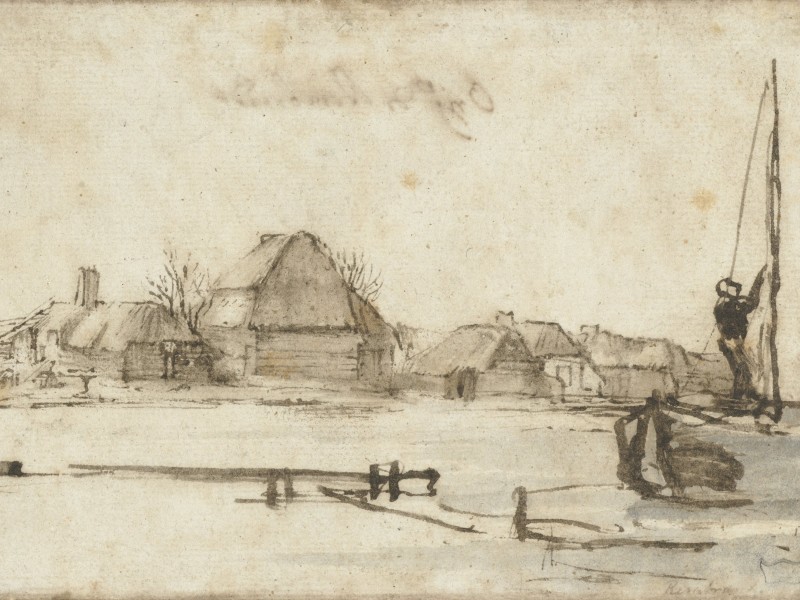
Kiechel wrote that crossing the lake was very dangerous but did not mention why. He added that it was possible to sail into the Baltic Sea from this lake.
The lake was in fact the Little Belt, a strait separating Jutland from the island of Funen. It is one of three straits connecting the Baltic Sea and the North Sea via the Kattegat. The conditions were therefore not those of a sheltered lake but of the open sea, made worse by the time of year.
But our traveller and his companions were lucky. The wind remained calm, and they reached the other side safely. Due to the ice on the water, passengers had to disembark a short distance from the shore and walk across it to reach land. On the opposite bank was the small town of Assens, which belonged to the Kingdom of Denmark.
The travellers spent the night in Assens and left the next day in a carriage. They travelled four miles, had their lunch, and then found another coachman to drive them another four miles to the town of Nyborg. Kiechel noted that the town was on the Belt (Great Belt).
He and his companions spent the following day in Nyborg because the Great Belt was too rough to cross. Despite the bad weather, our traveller saw a boat depart that day and was glad not to be on board.
The Great Belt
On 1 February, the travellers decided to attempt the crossing and boarded a boat. The boat had four oars and four men to row. Samuel Kiechel was already on board when he learnt that, according to custom, the boatmen were not allowed to take people across the Belt if they did not know them or if they had no passport from the mayor of the town. Our traveller was unaware of this restriction, and his companions had not mentioned it. He was worried he might have to disembark. Two other foreigners who were already on the boat had to leave it again. However, he was fortunate, and no one asked him for his papers.
The boat left the shore, and the boatmen began to row. The wind was against them, but it was not too strong, and the rowers could make some headway. Halfway across the Belt, they stopped at the small island of Sprogø. According to Kiechel, the island was inhabited by two Dutch peasants and their livestock. They produced good butter and cheese, similar to those made in Holland.
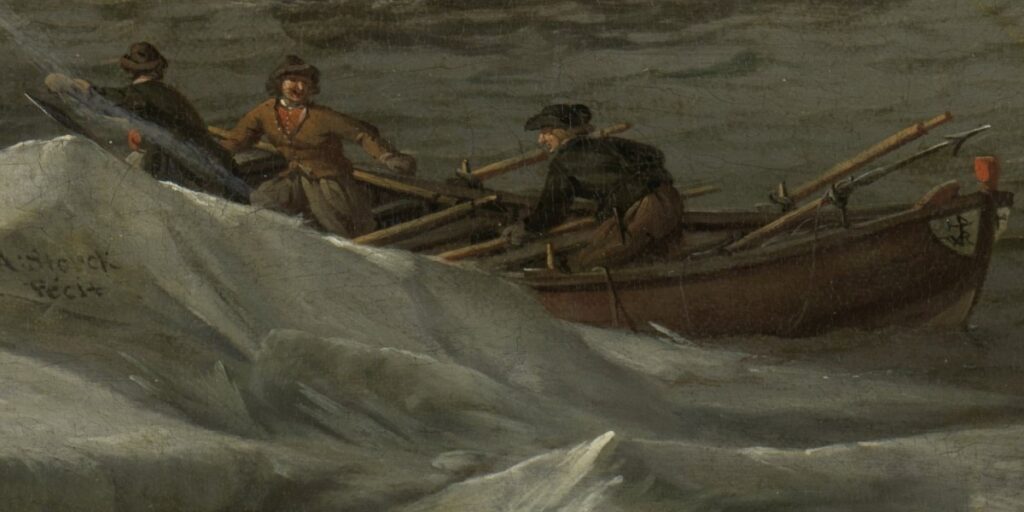
After a short break, the travellers returned to the boat. Kiechel wrote that the sea was treacherous in this area and the wind could change quickly. When they were one mile from the shoreline, they encountered large ice floes covering the sea. The boat could not row on. The ice was so thick that two of the boatmen stepped out and stood on it. The two men began hacking the ice into smaller pieces with iron picks so the boat could pass through. It took over an hour to get past the ice, and throughout, there was the danger that the wind could suddenly rise and drive the boat into the ice. Kiechel noted that the water close to the shore carried less ice because the wind had driven it out to sea. Our traveller also wrote that ducks densely populated the area. He had never seen so many together in one place; they covered the water like a blanket. The boat finally reached the other side of the Belt at the town of Korsør in the afternoon.
A map in the “Theatrum Orbis Terrarum” by Abraham Ortelius depicts Denmark and shows the Little Belt and the Great Belt along with the towns Kiechel mentioned (Assens, Nyborg and Korsør). In the west, between the island of Zealand (Selandia) and the Provinces of Scania and Blekinge (Sconia and Blieker) is the Øresund (De Sont), the most important of the three straits between the Baltic and North Seas.
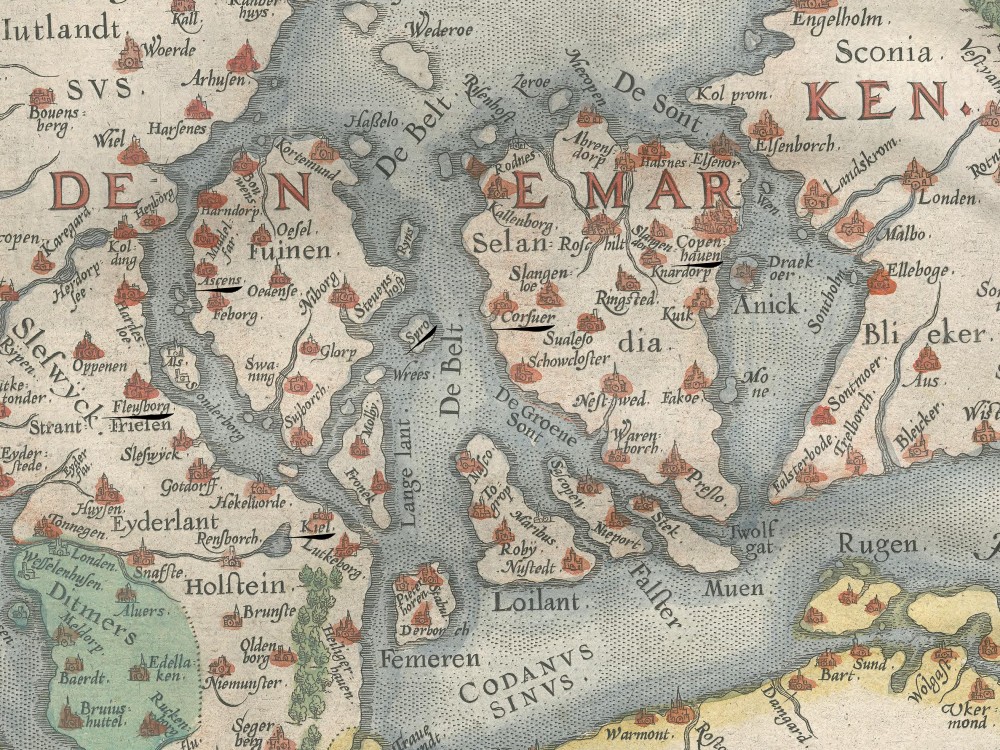
Map of Denmark, 1587
Across Zealand
The travellers had something to eat in Korsør and afterwards hired two carriages and two coachmen to drive them for two miles. They arrived in a village after nightfall. There, they found another coachman to bring them to a small and unfortified town. In the town, the group went to the mayor. Samuel Kiechel learnt that there were no inns in this region. Travellers had to stay with friends or acquaintances.
The group spent some time at the mayor’s house because the mead they were served was so good. Mead is an alcoholic beverage made from fermented honey. Our traveller wrote that it was sweet and strong and was exported to many other countries. The older the mead was, the better and stronger it became.
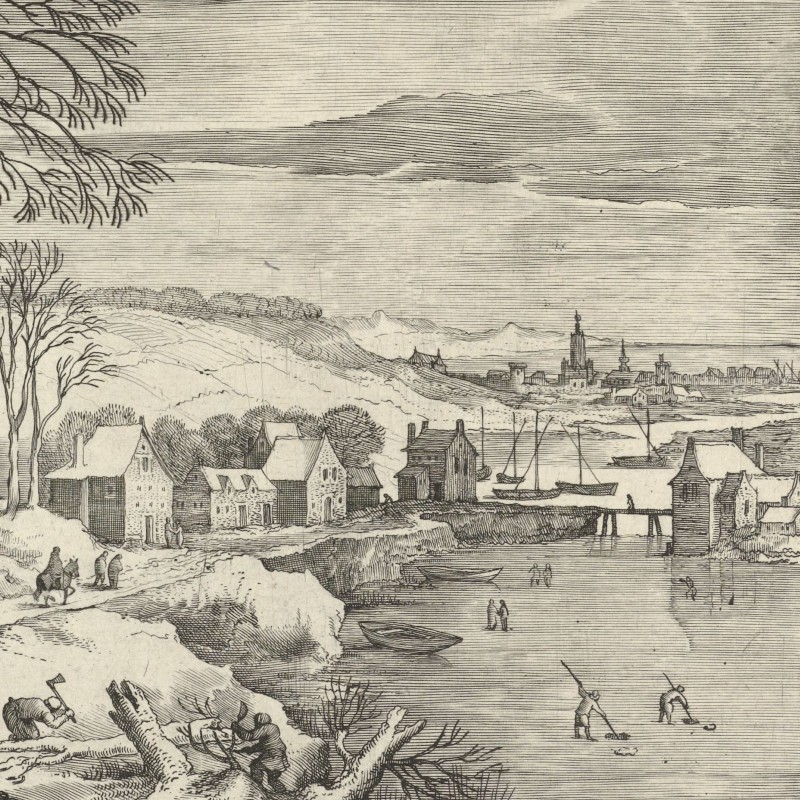
It was still nighttime and very cold when the travellers left the mayor’s house. They continued their journey but soon had to stop because their carriage had lost a wheel. Initially, the coachman did not even notice it, and then he had to walk back to retrieve it.
The travellers arrived in the town of Rüneschburg (possibly Ringsted) after midnight. The men rested for a few hours in the house of a peasant, but left before daybreak. They found another carriage and driver.
According to our traveller, some people in the villages of Denmark made their living as carters and were willing to transport travellers regardless of the time of day. It was only difficult for foreigners who did not speak the language. As a sidenote, Kiechel also mentioned that it was customary in this region to cut off part of the right foot of all dogs so they could no longer run and do damage to game animals.
On 2 February, Kiechel and his companions arrived at lunchtime in another small town. Our traveller mentioned that the town had a beautiful church where all the kings of Denmark were buried.
This town was Roskilde. During the Middle Ages, it was one of the most important political and religious centres in Denmark. Due to plagues and fires, it fell into decline in the fourteenth and fifteenth centuries, with Copenhagen gaining in political prominence. The Protestant Reformation put an end to Roskilde as a religious centre. But the Cathedral remains the burial site of all Danish monarchs.
After a short break, the travellers left Roskilde. They hired another carriage and arrived in Copenhagen in the evening.
Illustrations & References
All images are in order of appearance with links to sources on external websites:
- Berchem, Nicolaes Pietersz., Stadswal van Haarlem in de winter, 1647; Rijksmuseum Amsterdam.
- Flensburg, in: Braun, Georg, Hogenberg Frans: Civitates Orbis Terrarum (4), Cologne 1594, fol. 30v; Heidelberg University.
- van Rijn, Rembrandt, Winter View with a Waterway, Cottages and Two Boats, ca. 1650; Rijksmuseum Amsterdam.
- Storck, Abraham, The whaling grounds, 1654 – 1708; Rijksmuseum Amsterdam.
- Ortelius, Abraham, Theater of the World, Antwerp 1587, fol. 46v; Library of Congress.
- Galle, Theodoor, Winter, 1581 – 1633; Rijksmuseum Amsterdam.
- Die Reisen des Samuel Kiechel aus drei Handschriften, K. D. Haszler (ed.), Stuttgart 1866, p. 54; Bayerische Staatsbibliothek. ↩︎
